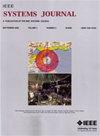TL-ConvLSTM:一种基于迁移学习的卷积LSTM,用于识别和预测未来环境中的流量
IF 4.4
3区 计算机科学
Q1 COMPUTER SCIENCE, INFORMATION SYSTEMS
引用次数: 0
摘要
对蜂窝通信流及其类型进行预测和分类是智能网络系统中保证网络高效优化的重要功能。5G网络不断发展的特性导致流量模式随着时间的推移而波动,从而导致一种被称为模型漂移的现象。因此,准确预测和识别蜂窝通信模式成为一项复杂的任务。为了应对这一挑战,本文介绍了一种名为TL-ConvLSTM的创新方法,该方法将迁移学习与卷积长短期记忆(ConvLSTM)相结合,以有效地对抗模型漂移,并提供对网络内蜂窝流量的精确预测和识别。为了实现这一点,我们通过从源域估计其参数来启动TL-ConvLSTM的训练。然后,我们使用Kolmogorov-Smirnov方法在目标域内调整模型,微调其权重。为了提高模型自适应的精度,我们系统地探索了最优学习窗口。这一探索包括调整时间序列数据和特征维度的窗口大小,以捕捉5G环境中的动态流量模式。此外,我们利用我们实验室的Amarisoft 5G测试平台创建了一个为期12天的时间序列数据集。该数据集包括与交通流及其模式相关的各种特征。我们通过一系列实验展示了我们方法的有效性。本文章由计算机程序翻译,如有差异,请以英文原文为准。
TL-ConvLSTM: A Transfer-Learning-Based Convolutional LSTM to Identify and Forecast Traffic in the NextG Environments
Forecasting and categorizing cellular traffic flows and their types are essential functions in intelligent network systems to ensure efficient network optimization. The ever-evolving nature of 5G networks results in fluctuations in traffic patterns over time, leading to a phenomenon known as model drift. Consequently, accurately predicting and identifying cellular traffic patterns becomes a complex task. To tackle this challenge, this article introduces an innovative approach called TL-ConvLSTM, which combines transfer learning with convolutional long short-term memory (ConvLSTM) to effectively combat model drift and provide precise forecasting and recognition of cellular traffic within the network. To accomplish this, we initiate the training of TL-ConvLSTM by estimating its parameters from the source domain. We then employ the Kolmogorov–Smirnov method to adapt the model within the target domain, fine tuning its weights. To improve the precision of this model adaptation, we systematically explore optimal learning windows. This exploration includes adjusting window size for time-series data and feature dimensions to capture dynamic traffic patterns in a 5G environment. Furthermore, we make use of the Amarisoft 5G testbed in our lab to create a 12-day time-series dataset. This dataset includes various features related to traffic flows and their patterns. We showcase the effectiveness of our approach through a set of experiments.
求助全文
通过发布文献求助,成功后即可免费获取论文全文。
去求助
来源期刊

IEEE Systems Journal
工程技术-电信学
CiteScore
9.80
自引率
6.80%
发文量
572
审稿时长
4.9 months
期刊介绍:
This publication provides a systems-level, focused forum for application-oriented manuscripts that address complex systems and system-of-systems of national and global significance. It intends to encourage and facilitate cooperation and interaction among IEEE Societies with systems-level and systems engineering interest, and to attract non-IEEE contributors and readers from around the globe. Our IEEE Systems Council job is to address issues in new ways that are not solvable in the domains of the existing IEEE or other societies or global organizations. These problems do not fit within traditional hierarchical boundaries. For example, disaster response such as that triggered by Hurricane Katrina, tsunamis, or current volcanic eruptions is not solvable by pure engineering solutions. We need to think about changing and enlarging the paradigm to include systems issues.
 求助内容:
求助内容: 应助结果提醒方式:
应助结果提醒方式:


